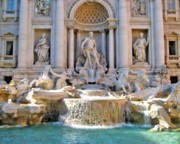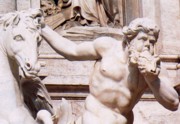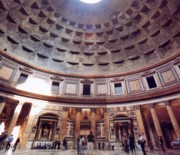
ROME - WALKING TOUR CLASSIC FOR DISABLED (TREVI FOUNTAIN + PANTHEON + PIAZZA NAVONA)
Details
ROME – 3-HOUR WALKING TOUR CLASSIC FOR DISABLED with the Trevi Fountain, the Pantheon (Free Entrance) + Piazza Navona
|
DURATION: | 3 hours | |
|
PRICE: | View the price list | |
|
AVAILABILITY: |
All-year-round |
THE PRICE INCLUDES: |
English-speaking Guide for the 3-hour tour of Rome
|
All the the monuments included in this Tour are equipped to accommodate persons with reduced mobility.
You’ll meet our professional English-speaking guide in the prearranged meeting-point, which can be changed according to guests requirements.
This marvellous tour of Rome will start with the visit of the most sumptuous fountain in Rome: The Trevi Fountain.
Legend has it that a foreigner who tosses a coin into the fountain ensures his return to Rome. Set against a large building, the fountain is decorated with bas-reliefs and statues which stand upon mighty rocks from which the water gushes. Spurts and roars animate the impressive scene.
Next stop is the Pantheon, the glory of Rome and the city’s only architecturally intact monument from classical times. Because of the inscription on the cornice of the portico, M. Agrippa L.F. Cons. Tertium fecit, for a long time it was believed that the Pantheon, as it stands today, had been built by Agrippa in 27 B.C. and dedicated to the gods of the Julian family; his temple was actually destroyed by a fire in 80 A.D., and completely redesigned by Hadrian. Other restoration was done under Septimius Severus and by Caracalla in the 3rd century.
On March 16, 609 A.D., Pope Boniface IV, with the permission on the Emperor Phocas, changed the pagan temple into a Christian church, bringing the bones of many Christians from the catacombs and dedicating it to “St. Mary of the Martyrs”, thus ensuring the preservation of the building to this day. In 1929 the church, as a result of the Lateran Treaty, assumed the title of the Basilica Palatina, or more properly the national church of all Italians.
Finally we’ll reach Piazza Navona, or Circus Agonale, which traces the shape of the Stadium of Domitian, which once occupied this site and held 30.000 spectators. Three magnificent fountains decorate the piazza:
In the center – “an Aesop’s fable fashioned in marble” – is the Fountain of the Four Rivers by Bernini, who designed it as a base for the Egyptian obelisk which was brought here from the Circus of Maxentius. Four figures seated on the rocks represent the Nile, Ganges, Danube and the Rio de la Plata.
The Fountain on the south side of the Piazza, called the Fountain of the Moor, was designed by Giacomo della Porta between 1571 and 1576, but his statues of tritons and masks were later moved to the Giardino del Lago in the Villa Borghese; the statues on the fountain are 19th century copies. The fountain takes its name from the statue of the Moor, which Bernini added in the 17th century.
At the north end of the piazza is the Fountain of the Calderari (Coppersmiths), so-called because of the many workshops in the area. This fountain also lost some of its original statues and its sculptural decoration was only completed in the 19th century.
SUGGESTIONS:
Take water, camera & sun cream. In low season warmer clothing may be required!








